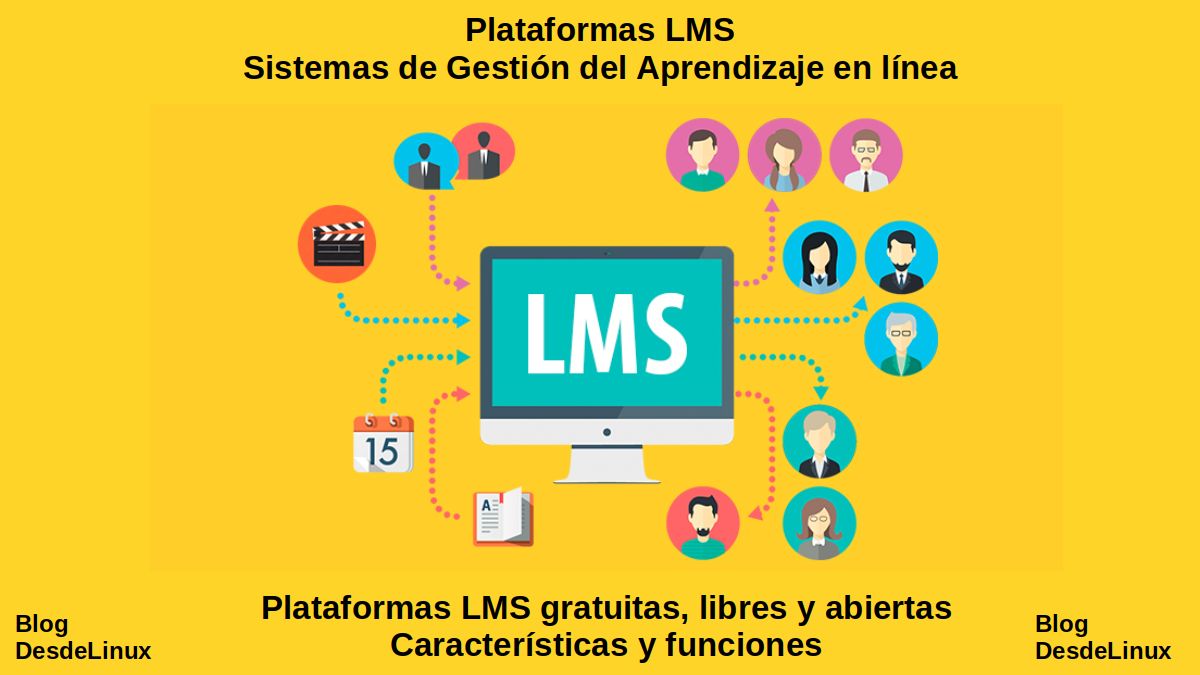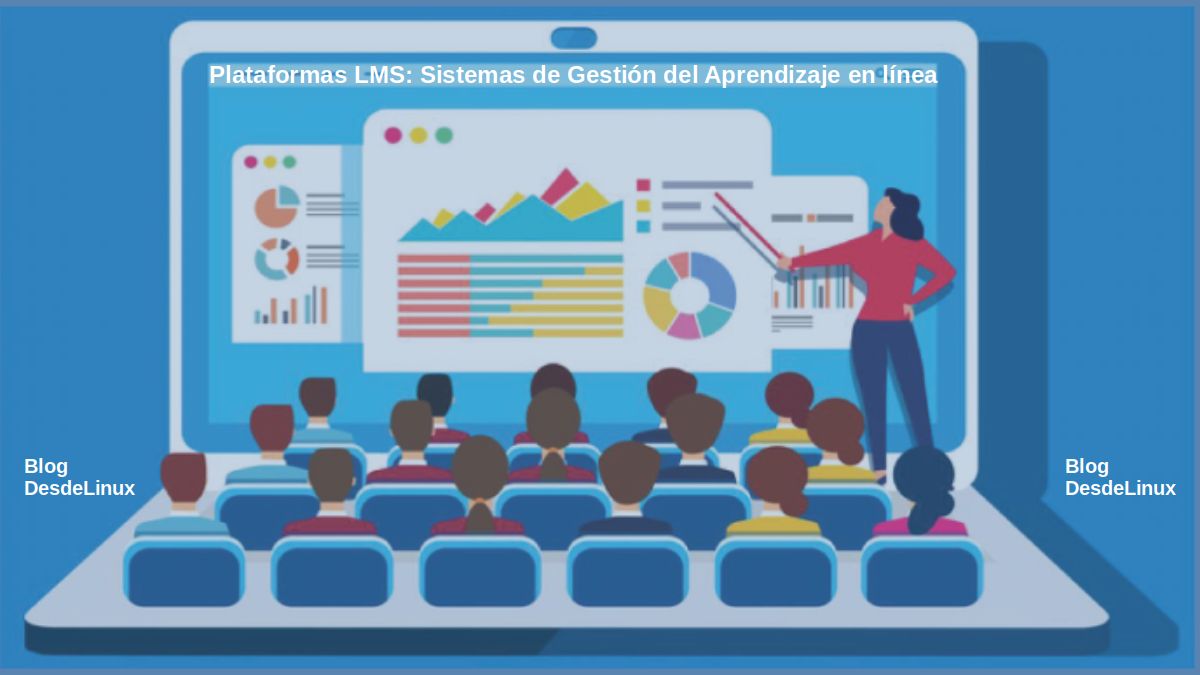
Free, Free and Open LMS Platforms: Features and Functions
All the LMS platforms or Online Learning Management Systems, offer a efficient and effective alternative, to innovate in Teaching and learning processes, that is, in the formative and / or educational processes.
Some of these are created with Free Software and Open Source and / or are simply Returns. In such a way that many can make the most of their time, resources and capabilities at affordable or zero costs, especially in difficult times, such as the one we live today worldwide, with the Coronavirus 19 or COVID-19.

All the LMS platforms are mostly used in the academic sector o for educational / training purposes, so there are many educational institutions or training organizations, public and private, such as Universities, Colleges and Institutes those that tend to make them available to those interested.

Free, free and open LMS platforms
Among the most remarkable, of each of the Free, free and open LMS platforms that is available in the current market, we can mention the following:
Author
- It is an installable open source tool to create LMS Platforms.
- It was developed in Canada by the ATRC Organization (Adaptive Technology Resource Center).
- It is designed in PHP, Apache, MySQL, and can be installed on Windows, GNU Linux or Unix Solaris.
- It is currently on version 2.2.4, available in more than 30 languages, and compatible with SCORM version 1.2.
- It has electronic teaching tools (e-learning), such as Social Learning, Blogs, Forums and Wikis.
- Its installation and use is quite simple, and it allows easy adaptations of modules and themes.
- It is very focused on accessibility and adaptability to guarantee access and ease of use for people who may have a disability.
- The main disadvantage is its rudimentary appearance, that is, its primitive interface and not very aesthetic. In addition, it does not natively incorporate means of payment / collection, or digital marketing facilities. And its responsive web capacity is limited.
To learn more about this tool you can access the what's new in the current version and the description of the modules that compose it.
CanvasLMS
- It is an online LMS Platform based on open source, under the AGPLv3 license.
- It was developed in the USA by the Software Development Organization "Instructure, Inc".
- It has a striking and friendly graphical interface, focused on managing users and the administrator.
- It has a modern design, with excellent ease of use, which is why it is widely used by renowned organizations for their electronic teaching processes (e-learning).
- It has an excellent responsive web capacity, which makes it ideal for use on different devices. In addition, it supports new LTI (Learning Tools Interoperability) technology.
- It has a Dashboard with excellent indicators to support the learning process and has excellent social capabilities, that is, systems and tools to promote collective learning.
- The main disadvantage is that to use any additional functionality to the basic ones, you must pay for it, as well as for the support. In addition, it has few customization possibilities.
To learn more about this tool you can access its alternative community site now your place in GitHub.
chamilo
- It is an installable open source tool to create LMS Platforms.
- It was developed in Spain by the non-profit organization “Asociación Chamilo”.
- The "Chamilo Association" seeks to promote the development and ensure the use of the LMS Chamilo Platform, and one of its main purposes is to guarantee free access to education throughout the world.
- Its name in Spanish means "Chameleon", which reflects its objective of being a free LMS Platform, very adaptable and accessible to the majority, which is why it is widely used in schools, universities and institutes.
- It allows the installation, modification and creation of complementary elements to adapt it to specific needs of electronic teaching processes (e-learning), thanks to the fact that it is under the GNU / GLP v3 license.
- It is based on the code of the LMS Dokeos Platform. And it is currently used in more than 180 countries around the world, with more than 20 million registered users.
- It is designed in PHP, Apache, MySQL, and can be installed on Windows, MacOS and GNU Linux.
- The main disadvantage is that it needs to be integrated with other tools to be able to sell courses over the Internet (Marketplace). Also, according to many users, it requires constant updates, and the user experience is not first class.
To learn more about this tool you can access its Official blog and the section from "Frequent questions" its official website.
Thousand Classrooms
- It is an online LMS platform based on open source, which offers free web hosting with Moodle.
- It was developed by a private organization created by Fans of Moodle in order to offer LMS services for free, under the scheme of a monetization business through Google AdSense.
- This service offers the possibility of uploading your courses for free, and making them accessible to the public under certain conditions, making it useful for certain free and paid academic projects.
- It allows you to easily create your own online learning community, that is, a virtual classroom, with its own subdomain, secure access, full administration privileges and totally free.
- The main disadvantage is that the participants (students or clients) are exposed to advertising, which is usually perceived as bad or of low quality by them. In addition, its course sales capabilities are limited, since it does not integrate payment modules, and the created portal cannot be customized, which is important to give it more formality on a commercial level.
To learn more about this tool you can access its Official website where all your Conditions, advertising plans and donations, Rules for deactivating and deleting courses, Creating backup copies and Use of add-ons. And you can access the sites created with said tool using the following link, to explore the full potential of it.
Moodle
- It is an installable open source tool to create LMS Platforms.
- It was developed by the Australian pedagogue and computer scientist Martin Dougiamas, who released the first stable version on August 20, 2002.
- Today, the Moodle Project is directed and coordinated in turn by the Moodle Headquarters, which is an organization financially supported by a worldwide network of service companies or Moodle Partners.
- It is specifically designed to provide all participants (educators, administrators and students) with a single, robust and secure integrated system, with free or low-cost personalized learning environments.
- It is very customizable. Supports the incorporation or development of modules and custom functions, such as, payment gateways, video conferencing, gamification.
- The main disadvantage is that its graphical interface is not very advanced or user-friendly. Whether through own or external development, free or paid, it is something that has a solution, including customizing it.
To learn more about this tool you can access the section from "About" and the section of "Frequent questions" where everything necessary is covered and explained clearly about said tool. Also, keep in mind that although Moodle has a wealth of official documentation, there is a huge amount of reliable alternative information, since it possesses a huge community of people and places where you can find everything you need for its satisfactory use.
For more information on LMS platforms, we recommend exploring the great website of bit4learn, which is very good in this area.
"Bit4learn is a knowledge center on e-learning issues, our mission is to be able to provide valuable information that supports all those who want to dedicate themselves to the transmission of knowledge by applying disruptive technologies.". About Bit4learn.

Conclusion
We hope this "useful little post" the «Plataformas LMS» free, free and open, which offer an alternative Efficient and effective, to teach and learn, especially in these times, when the teleworking and teleeducation are necessary and required, be of great interest and utility, for the entire «Comunidad de Software Libre y Código Abierto» and of great contribution to the diffusion of the wonderful, gigantic and growing ecosystem of applications of «GNU/Linux».
And for more information, always do not hesitate to visit any Online library as OpenLibra y jedit to read books (PDFs) on this topic or others knowledge areas. For now, if you liked this «publicación», don't stop sharing it with others, in your Favorite websites, channels, groups, or communities of social networks, preferably free and open as Mastodon, or secure and private like Telegram.
Or simply visit our home page at DesdeLinux or join the official Channel Telegram from DesdeLinux to read and vote for this or other interesting publications on «Software Libre», «Código Abierto», «GNU/Linux» and other topics related to «Informática y la Computación», and the «Actualidad tecnológica».
Cheers! Could you quote us in your article, since you took as a reference content from our website? Atte. Bit4learn
Greetings Jonathan! Certainly, I really liked your website and it was the main one that I took as a basis to generate my own. Also take as a base 2 other websites, plus the original sites of each of the LMS Platforms investigated. Also, cite them and add them as a reference in the article so that people can expand a little more information about the LMS Platforms with your website. For the rest, much success and good health for all.